 Winter 2007
Winter 2007|
By Leslie Vincen
|
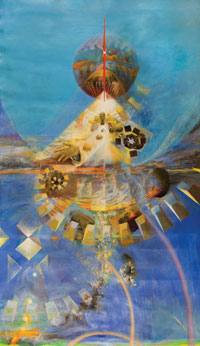 |
Lowry Burgess, American, b. 1940, Vision Portal: Crocus, 1966-1970/2002-2007. Courtesy of the artist. |
Canvassing the Universe
The sky is not nearly the limit for artist Lowry Burgess, whose infinite visions are presented in four elaborate, large-scale paintings on view in Carnegie Museum of Art’s Forum Gallery through March 23, 2008. The artworks, part of an ongoing series begun in 1966, are gigantic, and investigate metaphors of body and nature, skin and landscape, inside and outside, as well as issues of psychology, fantasy, and dreams—from the depths of oceans to the far reaches of outer space. Burgess, a Pittsburgh-based artist and professor in the School of Art at Carnegie Mellon University, has long developed art through the exploration of the cosmos, and in 1989 his work Boundless Cubic Lunar Aperture was the first piece of art taken into space by NASA.
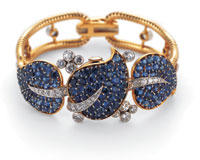 Rock Stars
Rock Stars
All that glitters is not gold. It could also be silver or plati-num, and it’s all on lustrous display at Carnegie Museum of Natural History. Luxe Life: Masterpieces of American Jewelry inaugurates the museum’s new Wertz Gallery: Gems and Jewelry, and will remain on view through early January 2008.
Guest curated by art historian Charlie Scheips, the exhibit’s three major tableaus feature masterpieces of American jewelry design spanning the mid-19th century to the present, arranged in specially created “natural” settings representing the flora, fauna, and celestial realms that inspired designers such as Tiffany and Cartier. In all, the exhibit features almost 100 pieces of stunning and historic jewelry, including a spectacular Alexander Calder necklace and tiara as well as a Mauboussin bracelet once owned by Mae West.
See the calendar for information about a December 12 “Food for Thought” focused on Luxe Life.
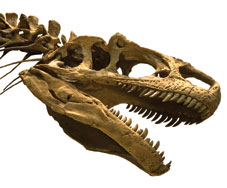 Jurassically speaking
Jurassically speaking
Walk with the dinosaurs at Carnegie Museum of Natural History and then explore the making of Dinosaurs in Their Time in a monthly companion lecture series where leading dinosaur experts weigh in on the most gigantic land animals of all time.
Get the pre-historic scoop from Matt Lamanna, a real-life dinosaur hunter and lead scientific advisor of the new exhibit, as he kicks off the series December 15 with an introduction to Dinosaurs in Their Time. Then learn the history behind the museum’s great fossils—and how they got there—from Mary Dawson, curator emeritus of vertebrate paleontology, on January 12. Next up on February 16, join Michael Ryan from the Cleveland Museum of Natural History as he digs up and pieces together the mystery of what could kill 10,000 ceratopsians at once. And in anticipation of the Phase II opening of Dinosaurs, former Carnegie Museum curator Hans-Dieter Sues, associate director for research and collections at the National Museum of Natural History, Smithsonian Institute, presents Cretaceous Dinosaurs from Central Asia, a summary of more than a decade of fieldwork in the Kyzylkum Desert of Uzbekistan and Kazakhstan. Winding up the series April 12, Lawrence M. Witmer, a professor at Ohio University, unlocks the riddles of Carnegie’s dinosaurs using advanced medical imaging.
All lectures are on Saturdays at 1 p.m. in the Carnegie Museum of Art Theatre, free with museum admission.
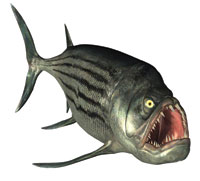 Fossil Colossal
Fossil Colossal
What’s so big about dinosaurs? Everything! Sea Monsters: A Prehistoric Adventure, now showing at Carnegie Science Center’s Rangos Omnimax Theater, submerges audiences in the ancient waters populated by saber-toothed fish, prehistoric sharks, and giant squid—the relatively unexplored world of the “other dinosaurs”—some of which are on display in Dinosaurs in Their Time at Carnegie Museum of Natural History. Narrated by Tony Award-winning actor Liev Schreiber, the film brings to life the extraordinary marine creatures of the dinosaur age, creating a jaw-dropping visual encounter for viewers of all ages.
Also now playing on the big screen, Dinosaurs Alive!—a gigantic adventure that brings dinosaurs, their behaviors, and their ancient environ-ment to life. A capti-vating adventure of science and discovery, it features a live-action story that follows some of the greatest dinosaur finds in history.
 A Mess of Fun
A Mess of Fun
Okay kids—don’t try this at home! Things are going to get really messed up when Carnegie Science Center celebrates its second annual MessFest on New Year’s Day 2008. This event shows just how much fun science can be, filled with kid-friendly activities that show the science behind things that make a big mess. Visitors can shoot “potato launchers” against the walls to make high-impact mashed potatoes, create fizz rockets, take part in an egg- drop workshop, and learn how to make fake wounds and blood. Kids of all ages can get their hands dirty with some of the Science Center’s messiest experiments and grossest demonstrations, including diet soda and Mentos launches, a kiddie pool full of Oobleck, and Edible Dirt in the Kitchen Theater. Visitors will be up to their elbows in glop, goop, and gunk during this one-day extravaganza that’s sure to be a mess of fun. All activities are free with general admission.
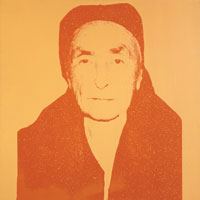 |
Andy Warhol, Georgia O'Keeffe, ca.1980. ©AWF |
The language of abstract expression is heard loud and clear between two artistic masters in the special exhibition Georgia O'Keeffe and Andy Warhol, on view at The Andy Warhol Museum through December 30. The exhibit includes a series of seven abstract watercolor paintings created by O’Keeffe in the 1970s, when she was in her 90’s and nearly blind. Working with assistance, and using a large watercolor brush, O’Keeffe painted a series of watercolors using the same primal forms that hauntingly recalled the abstractions she had invented and applied in some of her earliest pieces. These rarely seen late works, with their simple shapes and dynamic character, reveal O'Keeffe’s deep understanding of and commitment to abstract forms. They were so fundamental to her being, in fact, that she could—and did—create them almost without seeing. The exhibition also includes a special selection of Andy Warhol’s related works.
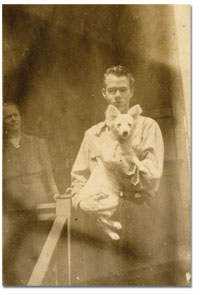 |
Andy Warhol, his mother Julia and his dog Lucy ca. 1947-48 |
Andy Warhol never met a pet he didn’t like. His long history of relationships with four-legged friends is revealed in Canis Major: Warhol’s Dogs and Cats (and other party animals), presented at The Warhol January 12 through May 4, 2008. The show presents images of the many pets (and other animals) that passed through Warhol’s life as elevated subjects for his art and as everyday trusted companions. From the Warhola family’s lovable mutt Lucy, to Warhol’s Siamese cats, to his dachshunds Amos and Archie, pets were a constant in his life. The pop icon was an avid collector of almost everything, including taxidermies: a lion, a peacock, a penguin, and a moose head. The best known of these was Cecil, the Great Dane that stood guard at the Factory’s door from about 1970 to 1987. The exhibition identifies the true identity of “Cecil,” his pedigree as a Westminster Champion, and the strange tale of how he arrived at Warhol’s door.
Walking with the Dinosaurs · Tales from the Supporting Cast · From Trophies to Treasures · The Popular Salon of the People: Then and Now · Director's Note · NewsWorthy · Face Time: Diplodocus carnegii · About Town: International Appeal · First Person: It takes a village to raise a dinosaur · Artistic License: Size Matters · Science & Nature: Bodies of Knowledge · Another Look: Neapolitan Presepio Celebrates
 |
Copyright © 2017 CARNEGIE Magazine. All rights reserved. |

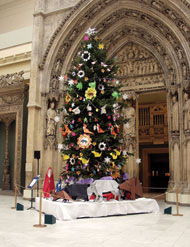 A Glass-decked Hall
A Glass-decked Hall